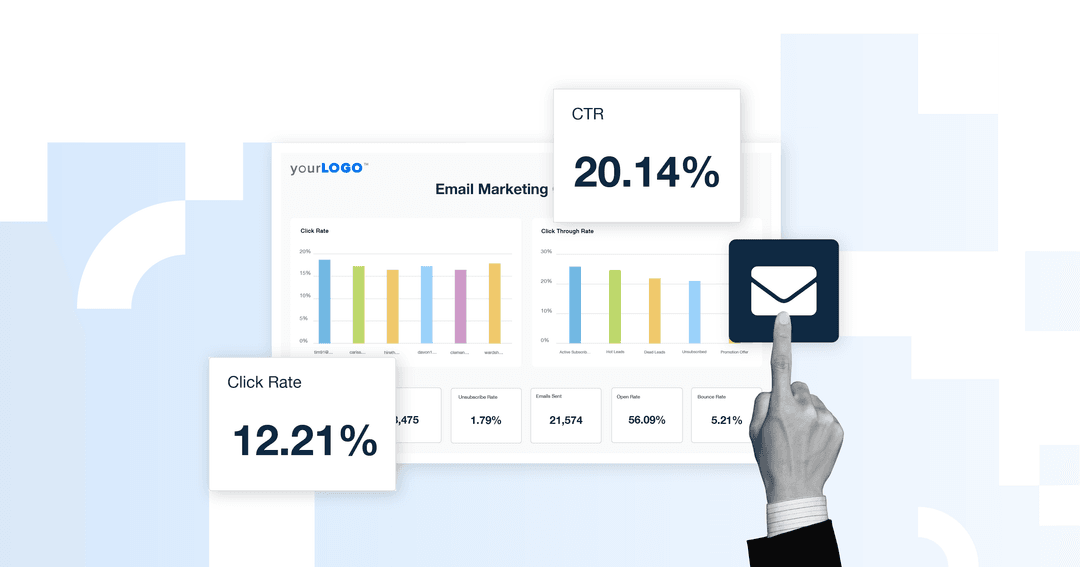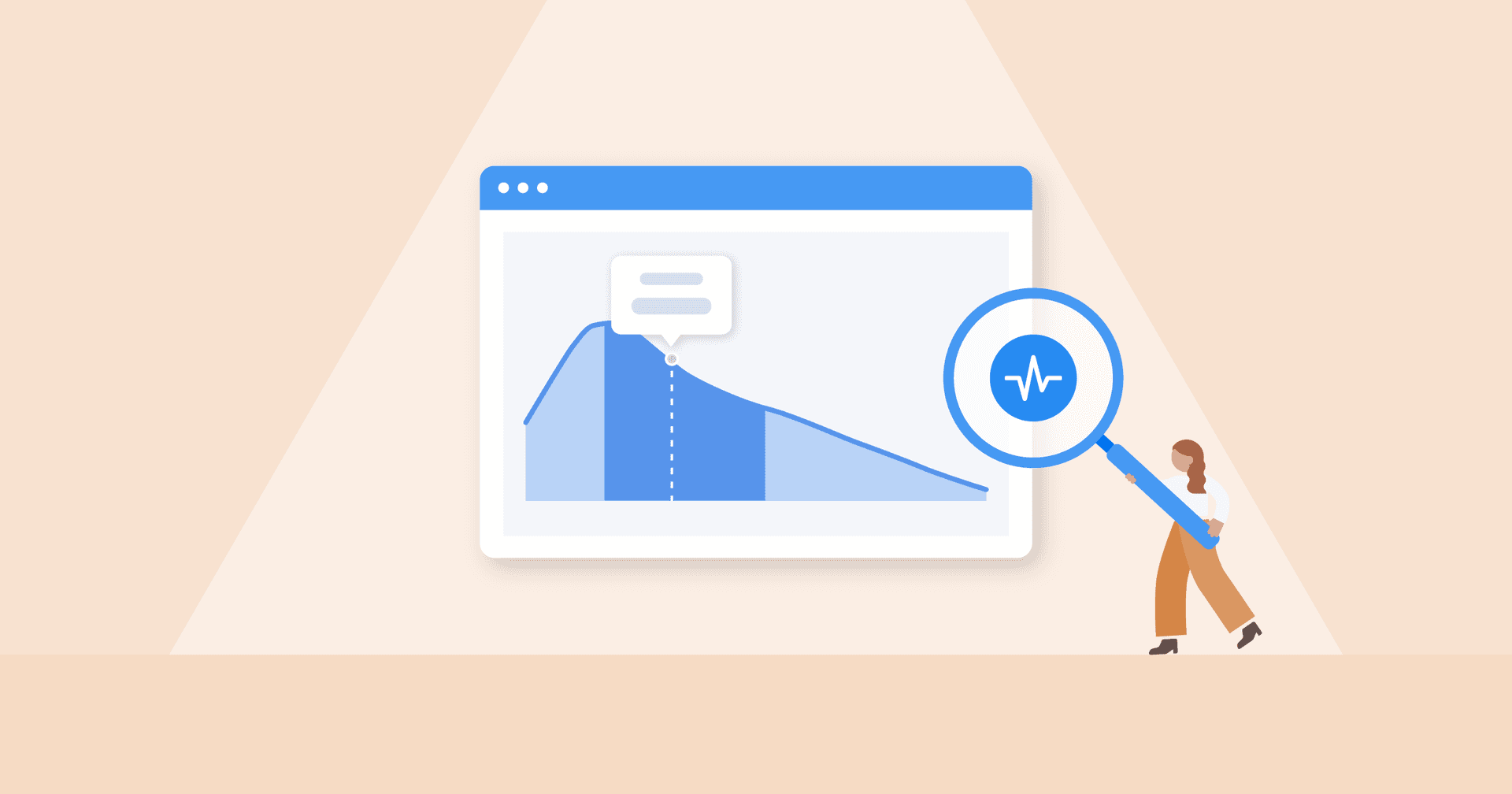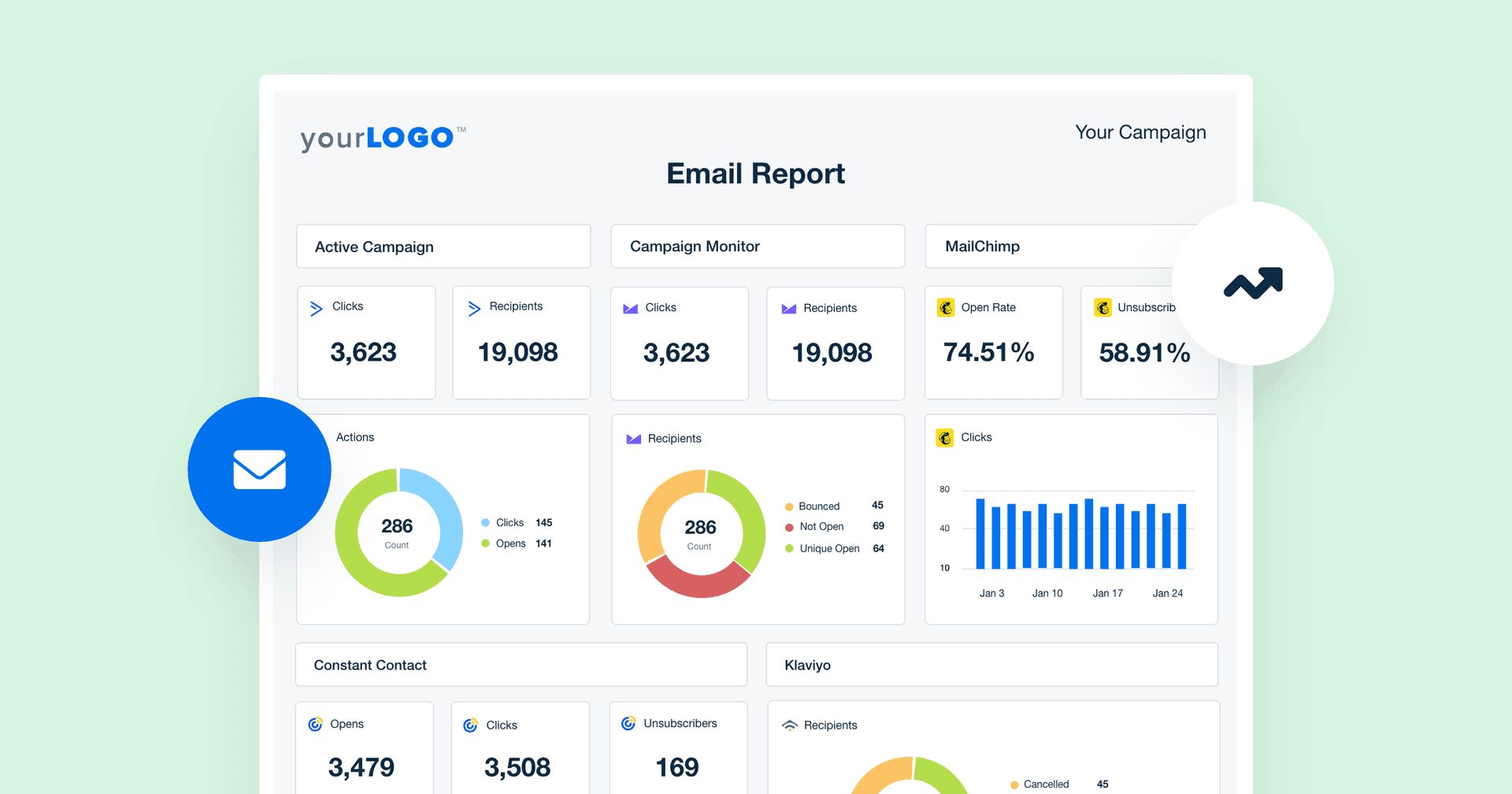Table of Contents
QUICK SUMMARY:
Click rate (CR) measures the percentage of recipients who clicked at least one link relative to the number of emails delivered while click-through rate (CTR) is based on total link clicks compared to total email opens. Understanding when to use each metric helps agencies optimize campaigns, improve engagement, and provide clearer client reporting. This article explains their differences, benchmarks, and strategies to boost both metrics for better marketing performance.
Marketing agencies constantly analyze performance metrics to determine the success of campaigns. But when it comes to click rate and click-through rate, the difference isn’t always clear—especially when both track user engagement with links. Misunderstanding these metrics could lead to misleading reports, misaligned strategies, and ultimately, missed opportunities for optimization.
Let’s say you’re running an email marketing campaign for a client. The email is sent to 10,000 subscribers, and 1,000 unique people click on at least one link. That gives you a click rate of 10% ((1,000 unique clicks ÷ 10,000 emails sent) × 100).
Now, imagine the email contains multiple links—product pages, blog articles, and a CTA button. Some people click on more than one link, resulting in a total of 2,000 clicks. However, out of the 10,000 emails delivered, they were only opened 5,000 times. The click-through rate would be 40% ((2,000 total clicks ÷ 5,000 emails opened) × 100).
If an agency only reports CTR, the client might assume engagement is higher than it really is. And if they rely solely on click rate, they may miss valuable insights about user interaction.
That’s why knowing when to use click rate vs. click-through rate is so important. In this article, we’ll break down their distinct purposes, when to use each metric, and how they impact marketing performance—so you deliver clearer, more actionable reports for your clients.
What Is Click Rate (CR)?
Click rate measures the percentage of users who click on a link relative to the total number of people who were sent the content. It’s commonly used in email marketing, paid advertising, and social media analytics to gauge engagement.
Unlike CTR, which focuses on the total number of clicks (i.e., counting multiple clicks from a single recipient), click rate is a metric that focuses on how many recipients clicked at least one link.
Still confused? Think of it this way: Theoretically, in an email with 10 links that received 10 clicks, one recipient could have been responsible for all the clicks, making CTR less reliable in that case. By contrast, CR would paint the full picture: One single, fascinated recipient rather than 10 potential interested customers.
How To Calculate Click Rate
The formula for click rate is:

Unique Clicks: The number of distinct recipients who clicked at least one link (each person is counted only once, no matter how many times they clicked).
Total Recipients: The total number of people who received the email.
Click Rate: The percentage of recipients who clicked on at least one link.
CR Examples in Email Marketing
Let’s say you send an email campaign to 10,000 recipients, and 1,200 unique recipients click on at least one link inside the email.
Using the Click Rate formula:

This means that 12% of all recipients engaged with the email by clicking on a link, helping measure overall audience interest and the effectiveness of the email content.
Industry Benchmarks for Click Rate
A higher click rate is a good indicator of strong audience engagement, but it doesn’t necessarily translate to conversions—that’s where click-through rate shines.
Click rates vary widely based on industry, platform, audience type, and campaign structure, so what’s considered a “good” click rate depends on the context. Generally, the average click rate in email marketing ranges from 2-5% across industries.
Why This Matters
Monitoring click rate benchmarks ensures agencies set realistic performance goals while uncovering areas for improvement. If a client’s click rate falls below industry norms, it may indicate issues with audience targeting, messaging, or CTA effectiveness. On the flip side, outperforming benchmarks suggests a highly engaged audience and an effective content strategy.
Instead of relying on assumptions, agencies that utilize real-time industry benchmarks provide data-driven insights, optimize campaigns, and enhance engagement for better client results.
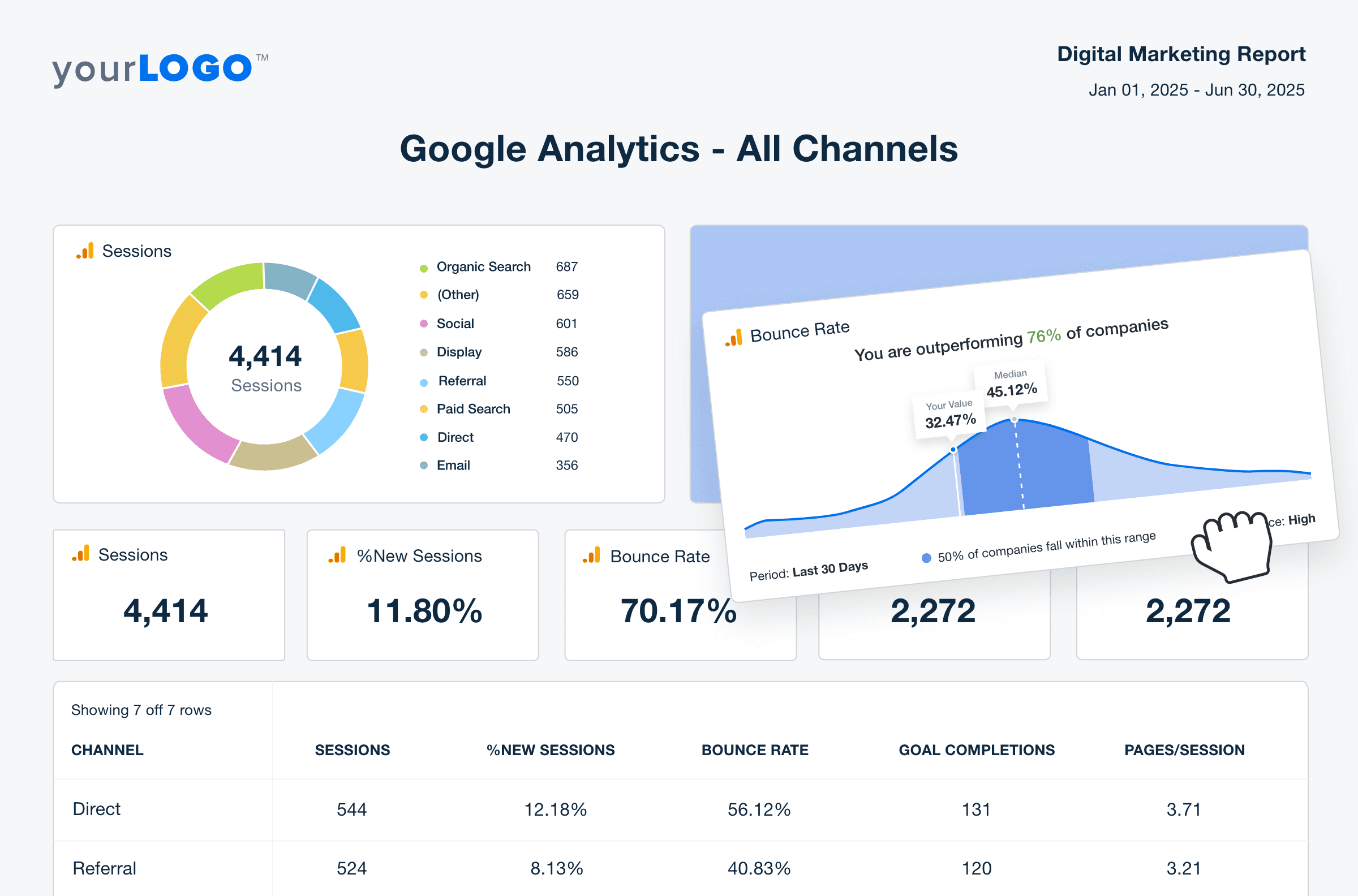
🔎 How do your client’s metrics compare? Sign up for a 14-day free AgencyAnalytics trial to access marketing benchmarking insights and track performance in one centralized dashboard.
AgencyAnalytics is super easy to use, both for our agency and for our clients. What we like best is the customizable reports. They allow us to automatically import all the data points into one place, plus they look amazing!
Dr. Richard Girling, CEO, Red Castle Services INC
What Is Click-Through Rate (CTR)?
Click-through rate measures the percentage of links clicked compared to the total number of times the email was opened. Unlike click rate, which focuses on one click per unique recipient, CTR focuses on engagement relative to visibility by counting total clicks.
CTR is widely used in paid advertising (Google Ads, Facebook Ads), SEO, and email marketing to assess ad effectiveness and content performance.
How To Calculate CTR
The formula for click-through rate is:

Total Clicks: The total number of times links were clicked (including multiple clicks from the same user).
Total Opens: The total number of people who opened the email or viewed the ad/page (this includes multiple opens from the same person).
Click-Through Rate: The percentage of opens that resulted in a click, showing engagement relative to visibility.
Agency tip: An important note to remember about click-through rate (CTR) is that it’s often higher than click rate (CR) because it accounts for all clicks—including multiple clicks from the same recipient—while click rate only counts whether someone clicked at least once. Since CTR includes total clicks and click rate only counts unique clickers, CTR often ends up being the higher percentage. If you ever see a situation where CR appears higher than CTR, it might mean there is confusion or inconsistency in how the metrics are being calculated or reported.
CTR Examples in Email Marketing
Let’s say you send out an email campaign to 10,000 subscribers, and 4,000 recipients open the email. Inside the email, there are links directing readers to a landing page, and those links receive 800 total clicks.
Using the CTR formula:

This means 20% of the people who opened the email clicked on a link, showing how effectively the email content and call-to-action (CTA) encouraged engagement.
Industry Benchmarks for Click-Through Rate
Just like click rate, CTR benchmarks vary widely depending on platform, industry, and ad type. The definition of a “strong” CTR is highly contextual. A good average click-through rate for email marketing typically falls between 4-10% across industries. However, this varies based on factors such as audience engagement, email content, design, and call-to-action effectiveness.
Why This Matters
CTR is a key indicator of ad effectiveness, helping agencies determine whether an ad is capturing audience interest. A CTR below industry benchmarks might signal ad fatigue, weak targeting, or underperforming copy and visuals, whereas a higher-than-average CTR suggests a compelling, well-targeted campaign.
By leveraging real-time industry benchmarks, agencies fine-tune targeting, creative elements, and bidding strategies to maximize engagement and drive stronger ROI.
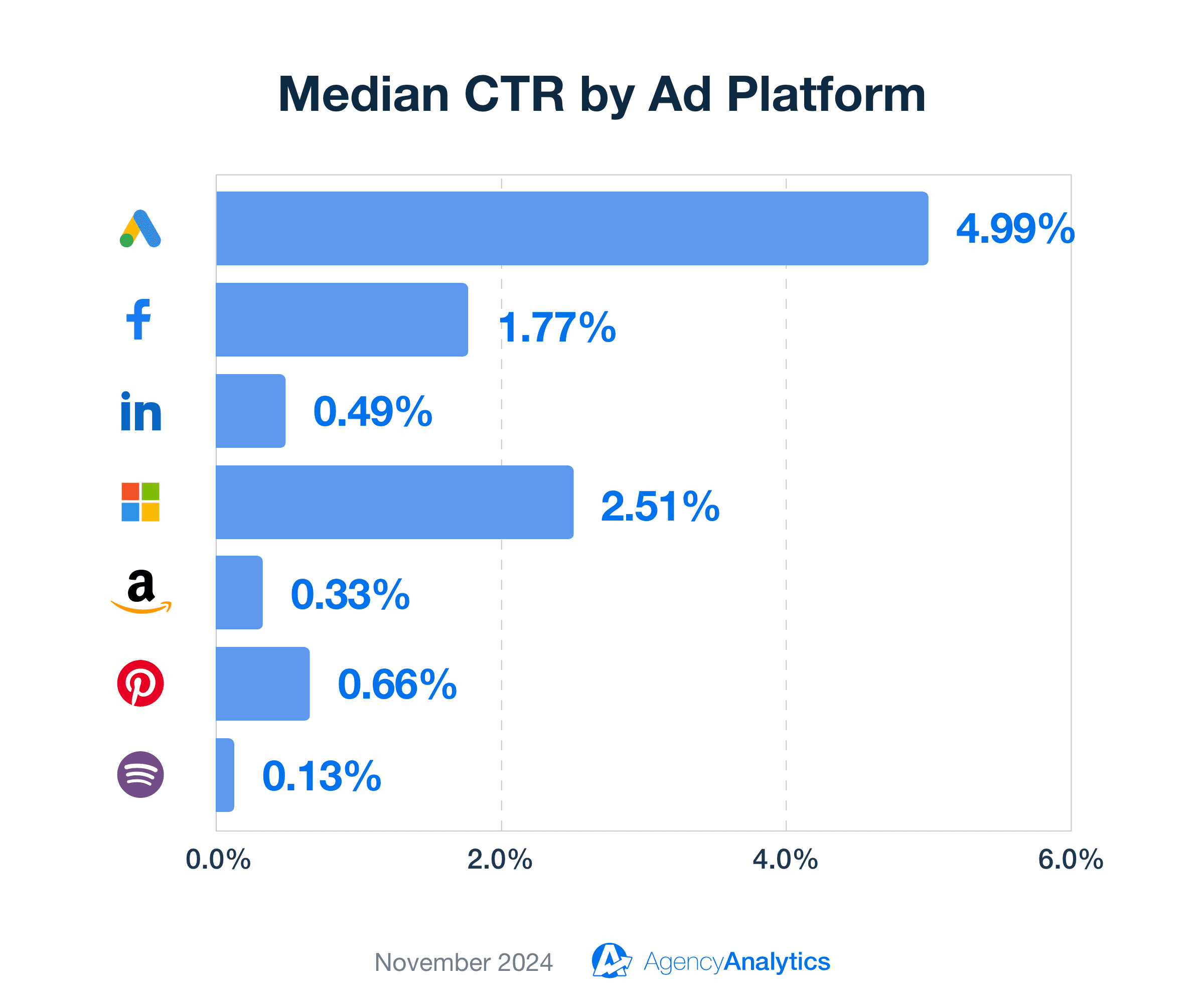
🔎 Want to compare your client’s metrics to industry standards? Sign up for a free 14-day AgencyAnalytics trial to access benchmarking insights and track performance in one centralized dashboard.
Click Rate vs Click-Through Rate: Key Differences
Now that we’ve covered click rate vs. CTR separately, let’s break down their key differences.
At first glance, click rate and click-through rate seem interchangeable. But when you’re analyzing a client’s marketing performance, knowing when to use each metric is critical.
When To Use Each Metric
Understanding the difference between click rate and click-through rate is key for evaluating an email campaign's performance and optimizing future campaigns. While both metrics measure engagement, they serve distinct purposes in assessing email marketing metrics, ad performance, and overall business success.
Metric | Definition | Best Used For | Ideal For | Key Insight |
|---|---|---|---|---|
Click Rate (CR) | Measures clicks relative to total unique recipients | Measuring overall audience engagement | Email marketing, broad campaign comparisons | Helps determine whether the email subject line and the delivered message resonate with the audience |
Click-Through Rate (CTR) | Measures clicks relative to total opens | Assessing content effectiveness | Email performance, ads, specific content analysis | Shows how effective CTAs and links are in driving users toward a desired action |
When To Use Click Rate (CR)
Use Click Rate when measuring how many unique people engaged with your client’s email, ad, or website by clicking at least once. This metric is a good indicator of whether the audience finds the email copy, subject line, and preview text compelling enough to take action.
Click Rate is particularly useful for:
Identifying engagement trends to determine whether the email campaign resonates with the target audience.
Assessing the effectiveness of subject lines, delivered messages, ad creatives, and social post engagement by seeing how many people took action.
Evaluating overall audience interest in the content.
For example, if an email click rate is low despite a high open rate, it suggests the email copy or the provided links may not be compelling enough to drive action.
When To Use Click-Through Rate (CTR)
Use click-through rate when analyzing how well an ad, email, or CTA button performs relative to its visibility. A good click-through rate means that a large percentage of those who saw the content clicked on a provided link, signaling relevance and effectiveness.
CTR is a powerful tool for:
Optimizing ad performance by measuring how many users clicked on an ad compared to the number of times it was shown.
Refining email content and design by tracking which CTAs drive the most engagement.
Improving targeting strategies, as a low CTR could suggest that an ad or email isn’t reaching the right audience.
Fine-tuning marketing strategies, as a high click-through rate suggests strong engagement, while a low CTR may indicate poor targeting or ineffective messaging.
For instance, if an email campaign has thousands of delivered emails but a low CTR, the issue could be the email copy, unclear CTA, or irrelevant audience segmentation.
Rather than guessing, agencies that analyze average click-through rate benchmarks and compare click-through rate vs conversion rate make data-driven decisions to increase engagement and improve campaign ROI.
Why Click Rate & CTR Matter for Marketers and Agencies
For agencies, click rate and click-through rate are important metrics that help measure engagement, optimize campaigns, and drive conversions. Understanding click rate versus click-through rate ensures agencies use the right message and clear CTAs to encourage email opens and user interaction. These two metrics directly impact overall success, influencing ad costs and email performance.
Impact on Conversion Optimization
Click rate and click-through rate are helpful metrics for understanding how well an email campaign encourages recipients to take action. A higher CR suggests that the email content is relevant enough to get people to click, but it doesn’t necessarily mean they convert.
That’s where CTR comes in—tracking click-through rate vs click rate provides deeper insights into whether recipients move beyond clicking and take meaningful actions like making a purchase or signing up for a service.
If an email has a high CR but low conversions, it could indicate that while users are clicking, the landing page, offer, or overall user experience is not compelling enough to drive them further.
Conversely, a high CTR but low conversions may suggest that the email subject line and copy sound similar to what users expect, but the landing page doesn’t deliver on that promise. Comparing click-through rate vs open rate, and click to open rate vs click through rate helps pinpoint whether the issue lies in the email content, CTA placement, or post-click experience.
To optimize conversions, agencies should monitor conversion rate against click through rate, ensuring that email engagement translates into actual results. A/B testing different email subject lines, CTAs, and content strategies will help fine-tune campaigns to improve both engagement and conversion rates.
Effect on Campaign Performance
Click rate and click-through rate provide valuable insights into overall campaign effectiveness, helping agencies measure how well an email resonates with its audience.
A higher CR suggests that the email successfully captures attention and encourages recipients to interact. If CR is low, it could mean the email is being ignored, buried in inboxes, or failing to stand out.
CR and CTR also play a role in audience targeting and list segmentation. If a campaign has high CTR but low CR, it may indicate that while the messaging is strong, it’s only resonating with a small, highly engaged subset of the audience. By comparing click-through rate vs impressions, agencies refine personalization strategies to increase both initial engagement and deeper interaction with the email.
Ultimately, by tracking email click rate and click-through rate across multiple campaigns, agencies will identify patterns, improve targeting, and optimize future content strategies to maximize the effectiveness of their email marketing efforts.
Collecting critical data all in one spot is amazing and has bought us time back. When you are tracking SEO, PPC, Social Media and email marketing campaigns it can be time consuming. This is why having a template and dashboard that efficiently does it all is a game changer.
Justin Hual, Co Founder + COO, HIP Creative
How To Improve Click Rate & CTR
Optimizing click rate and click-through rate is essential for improving email campaigns and ensuring higher engagement with subscribers. Since these two metrics provide insight into how effectively an email drives action, refining them leads to better open rates, higher conversions, and increased traffic to a website or landing page.
A/B Testing for Better Results
One of the most effective ways to improve click rate and click-through rate is through A/B testing. By testing different subject lines, CTAs, email layouts, and content structures, agencies determine what drives a good click through rate and maximizes engagement.
Beyond email content, testing landing pages ensures that clicks translate into meaningful actions. With tools like the Unbounce integration within AgencyAnalytics, agencies report on the success of A/B tests for different page designs, messaging, and form placements to increase clicks. This approach allows for data-driven decisions rather than guessing what works best.
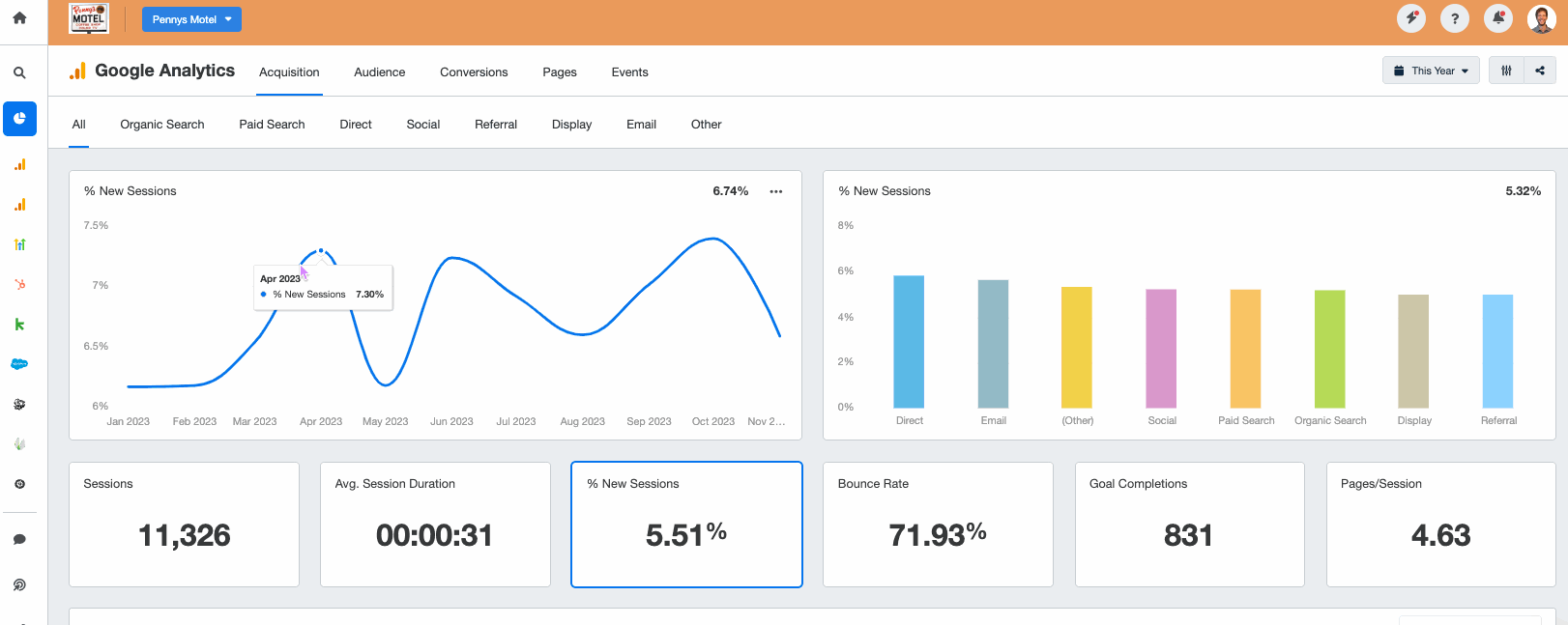
Boost your A/B testing efforts with the Unbounce integration from AgencyAnalytics! Try it free for 14 days.
Writing Compelling CTAs
A well-crafted CTA encourages action. A weak or vague CTA may not generate as many clicks as a clear, benefit-focused statement. The wording should be relevant to the content and create urgency to encourage readers to take immediate action.
Additionally, consider how CTA placement affects click-through vs click rate. CTAs should be visible early in the email and repeated when necessary to ensure subscribers don’t miss them. Ensuring the CTA stands out visually with contrasting colors and white space also improves engagement.
Optimizing Subject Lines
The email subject line plays a crucial role in determining whether recipients open an email, directly impacting overall engagement.
If an email isn’t opened, no one will click on the links inside. That’s why it’s essential to ensure the subject line is compelling to readers. The best subject lines are short, engaging, and specific, clearly setting expectations for the content inside the email.
Segmenting and Personalization
Segmentation and personalization are key to improving click rate and click-through rate by ensuring emails are relevant to each recipient. Rather than sending the same message to everyone, segmenting based on subscriber behavior, interests, or demographics allows for targeted content that resonates more deeply.
Personalization goes beyond using a recipient’s name—it includes tailored product recommendations, behavior-triggered emails, and dynamic content that aligns with individual preferences. When emails feel more customized and valuable, recipients are more likely to engage, leading to higher click rates, stronger customer relationships, and improved overall campaign performance.
Timing Emails
The time that emails are sent directly affects click rate and click-through rate, as sending emails when subscribers are most active increases open rates and clicks. Poor timing—like late nights or busy work hours—could cause emails to get buried.
Analyzing audience behavior helps pinpoint the best send times, with B2B emails performing better during work hours and B2C emails often seeing more engagement in the evening or on weekends.
Automation and behaviour-based triggers such as welcome emails after sign-up or cart abandonment reminders, ensure messages reach recipients at the right moment, maximizing engagement and conversions.
Measuring & Reporting on Click Rate & Click-Through Rate
With AgencyAnalytics’ email marketing reporting tools, agencies streamline performance tracking, compare key metrics, and present clear insights to clients. Automated reports make it easy to visualize trends, refine strategies, and demonstrate campaign success, helping agencies deliver data-driven optimizations for enhanced engagement and conversions.
Even better? Tools like Ask AI surface actionable insights in seconds, and metric alerts let agencies know as soon as key metrics experience a notable dip or surge. By receiving real-time updates on the data, agencies are equipped to dive in and take action to course correct when metrics like CR or CTR take a step in the wrong direction, tangibly improving client outcomes.
Curious how your agency could use AgencyAnalytics to improve your clients’ email marketing campaigns? Try AgencyAnalytics free for 14 days.
Many of our client relationships require customized reports because we're managing multiple marketing channels for them at once to run cohesive, integrated marketing campaigns. They don't want to see 7 reports, one per platform: Facebook Ads, Google Ads, Email Marketing, Website Analytics, etc. They want everything condensed into one, easy-to-read report, where they can view all of their most significant marketing data in one place. The customizable marketing reports allow us to do just that. The clients love them and we do too.
Graham Lumley, Director of Growth Marketing, Blackhawk
FAQs About Click Rate vs Click-Through Rate
Still have questions about click rate and click-through rate? Don’t worry! We’ve got you covered. Here are some of the most common questions and answers to help you better understand these important metrics.
Click rate measures the percentage of total recipients who clicked on a link, while click-through rate measures the percentage of opened emails that resulted in a click.
CTR measures the percentage of total clicks relative to total opens, meaning it includes multiple clicks from the same user. CTOR, on the other hand, focuses only on unique clicks divided by unique opens, giving a clearer picture of how many individual recipients engaged after opening the email.
CTR and Click-Through-Rate are the same metric. It is calculated as: (total clicks/total opens) x 100

Written by
Alisha Chowdhury holds a degree in Business Management with a focus on Marketing. She brings hands-on experience in SEO, copywriting, social media, and content creation. Alisha is passionate about digital strategy and enjoys crafting content that informs, inspires, and provides value to others.
Read more posts by Alisha ChowdhurySee how 7,000+ marketing agencies help clients win
Free 14-day trial. No credit card required.



